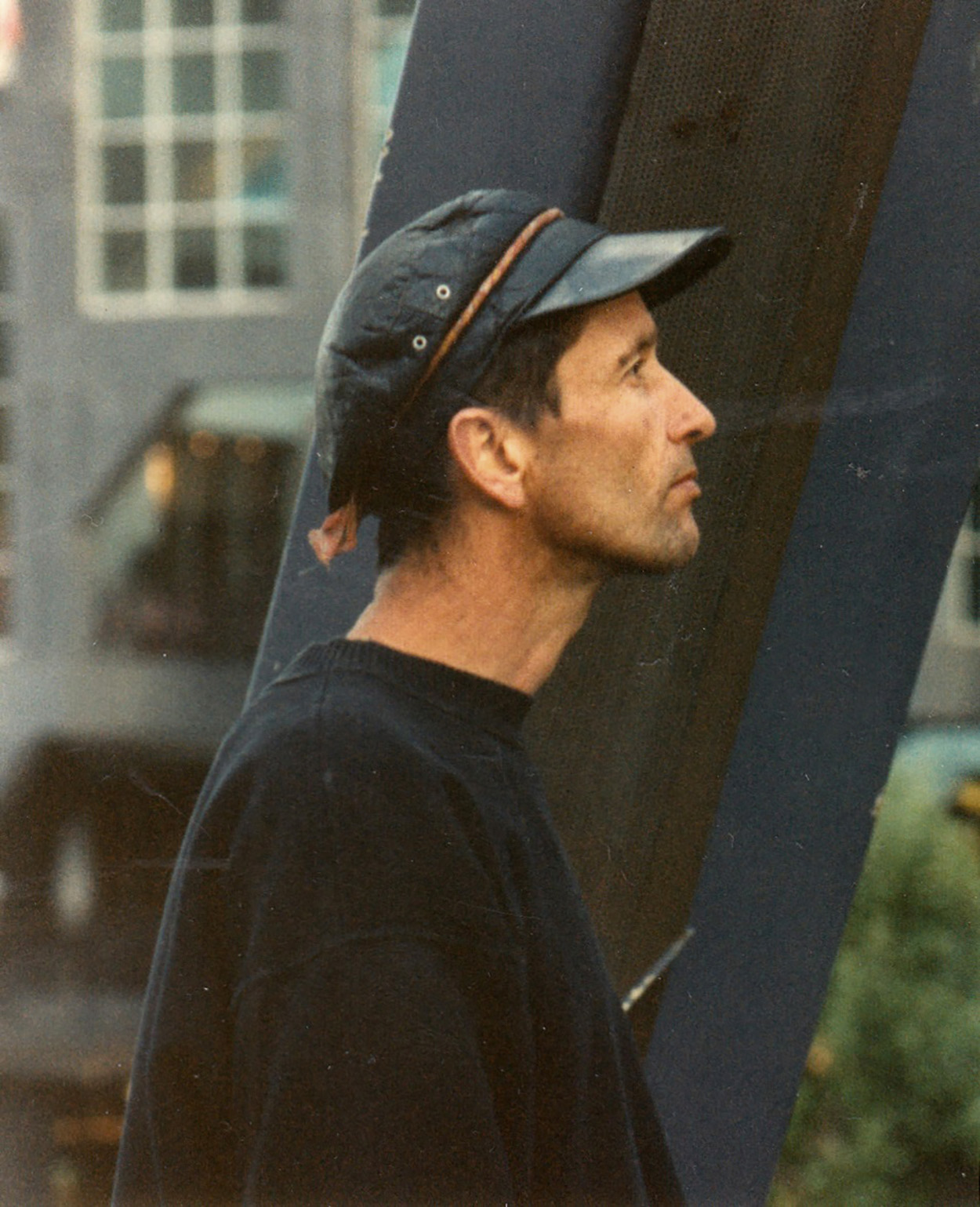About Bambuco

Bridge, Melbourne Festival (1995)
S300809 / Bambuco Archive
Bambuco was an arts company that created temporary installations with bamboo. Their installations combined theatre, sculpture and architecture on a grand scale, with the construction of each work considered part of the overall performance.
The company was mostly made up of rock climbers. The core crew members came from the small rural town of Natimuk, in the west of Victoria, Australia. Natimuk’s population hovers at around 500. It is a place known for its exceptional rock climbing on nearby Mt Arapiles and its bi-annual arts festival Nati Frinj. This remote setting (320 km from Melbourne) is in curious contrast to the international presence Bambuco established.
Between 1998 and 2008 Bambuco constructed more than 30 large-scale installations, the majority of these outside Australia for international arts festivals.
Early years
Bambuco was founded in 1998 by Simon Barley. Simon had a background in spatial design for theatre/dance and installation sculpture. His leitmotif was the manipulation of vertical space.
In 1993, while sitting by Melbourne’s Yarra River, Simon pondered building his own bridge. He concluded that what was required was a light material — strong, versatile and inexpensive. He spent the following two years researching bamboo and experimenting with methods of construction.

Early sketch for Arch I (1998)
S200278 / Bambuco Archive
“Bamboo is nature’s own high-tech building material. If a bunch of engineers sat around and tried to design something that combined strength and flexibility, stiffness and elasticity… they would come up with bamboo, if they were really smart.” Simon Barley
In 1995 Simon presented his first public, large-scale bamboo installation. At the time he was in his seventh year as designer-in-residence with Melbourne’s contemporary dance company, Danceworks. Simon constructed a dense bamboo sculpture, which hugged the existing footbridge across the Yarra River at Southbank. The project, known as Bridge, was part of the Melbourne Festival. The construction was followed by a season of aerial dance performance on the installation by Danceworks.
What Simon observed here, and which became so crucial to the philosophy of Bambuco, was that the audience seemed more captivated by the construction process than the spectacle of the performance.
 Scaff I with 5 Angry Men, 3rd Australian Performing Arts Market, Adelaide (1998)
Scaff I with 5 Angry Men, 3rd Australian Performing Arts Market, Adelaide (1998)S301176 / Bambuco Archive
 Arch II, Theater der Welt, Berlin (1999)
Arch II, Theater der Welt, Berlin (1999)S301177 / Bambuco Archive
In 1998 Bambuco was born. In that same year, they collaborated with Melbourne’s 5 Angry Men at the Performing Arts Market in Adelaide, building a bamboo structure for the performance of their show The Bells.
Work had also commenced on developing Arch, an enormously ambitious project. After a number of attempts it became clear that Bambuco’s construction techniques and personnel were lagging a long way behind Simon’s vision. Simon remained committed to his vision and knew that with the right team and backing it could be achieved.
His perseverance paid off. Simon was invited to construct Arch I in the Philippines through the Department of Foreign Affairs and Trade, alongside an arts residency in Manila. A small team of seven tried valiantly against increasing odds — including a typhoon and a ten-day delay in receiving the bamboo — and with the help of locally recruited Filipino climbers, something was built. It did not resemble what Arch I was intended to be, but it was impressive none-the-less.
By sheer coincidence Maria Magdalena Schwaegermann (then program director of Theater der Welt in Berlin) heard about Bambuco’s work in Adelaide and Manila. Maria invited Bambuco to construct Arch II in 1999 in Berlin. The installation went up, relatively free of problems. With the successful construction of Arch II, Bambuco had stepped onto the international stage.

Arch II, Theater der Welt, Berlin (1999)
S301178 / Bambuco Archive
Materials and techniques
The bamboo Bambuco used is called moso. Moso is the common name of the species Phyllostachys pubescens, the bamboo most often used for scaffolding in Asia. During their years of operation, the bamboo was shipped directly from plantations in Anji province in China. The bamboo they sourced was specific to their requirements: six years old, large in diameter and relatively straight.
Bambuco’s construction method combined traditional techniques with modern materials. For example, hi-tech polymer rope was used to tie the bamboo together. Their access and safety systems were adapted from rock climbing, specifically “big wall” techniques. Most building was done by hand without the aid of machines, although on some of the larger, more complex projects, they utilised boom lifts for efficiency and safety.

Simon Barley, Melbourne (1995)
S1000039 / Bambuco Archive
“I like to create singular, visually dramatic structures, appearing over weeks yet gone within days, leaving an empty space that might appear occupied for some time by an absence.” Simon Barley
After Simon Barley
Simon passed away suddenly at his home in Natimuk in August 2007. A number of projects were in development at the time, with This Bridge being the most advanced. The decision to posthumously finish Simon’s last project was not taken lightly, but the project was successfully completed in Newcastle upon Tyne in 2008 in honour of Simon’s memory.For a period of time following Simon’s death, members of Bambuco toyed with the idea of relaunching the company. However, without Simon’s strong artistic vision and with the unexpected death of Co-Director Erik Pootjes a few years later, plans to reassemble the crew were permanently put on hold.